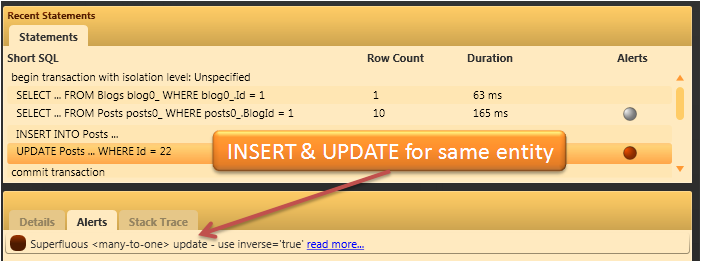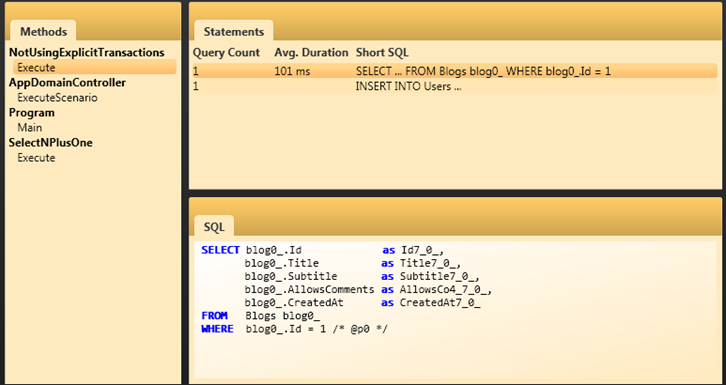I have been talking a lot lately about the technical aspects of working with NH Prof (and there are more posts scheduled), but not really talking about the new features at all. I firmly believe in the lynched-by-the-users model, and working for so long without having new features is an anathema to me.
I am going to try to leak them to the blog as they go fully online (with screenshotable UI), although I do mean to keep several surprises in my sleeve, and in my backpack, too, come to think about it, I need space for some of them ;-) ).
Anyway, I don’t think that this screen shot requires any additional explanations:
Unlike my previous posts about NH Prof’s new features, this is not currently available to download. Currently we are planning to sync up everything and show you what we got by the end of the week, so this is truly just a sneak peak right now.
The really amazing part of this feature? I did it, all on my own. The reason that I am surprised is that this feature actually have UI in it. And my facilities in UI manipulation are decidedly lacking. Nevertheless, this is all my work. The UI team didn’t have to get involved. I mentioned before how impressed I am by the work Christopher and Rob did on NH Prof. What I didn’t think got mentioned was the UI architecture that they built. Working separately, both me and Christopher & Rob has reached the same type of general architecture, based on concepts and features.
This report is a new feature based on an existing concept. The work to make that happen was already done, when the concept was introduced. Creating a new feature is a piece of cake now, and doesn’t require any special knowledge or any UI talent.
I am loving it.
Oh, and just to give you an idea about the time frame, I started coding the UI about 45 minutes ago, because I sat down to ensure that NH Prof was ready to show for my NHibernate workshops. I got sidetracked a bit and wired the feature into the UI. It is actually a bit more impressive, because the 45 minutes time also include the time to write the blog post :-)



















